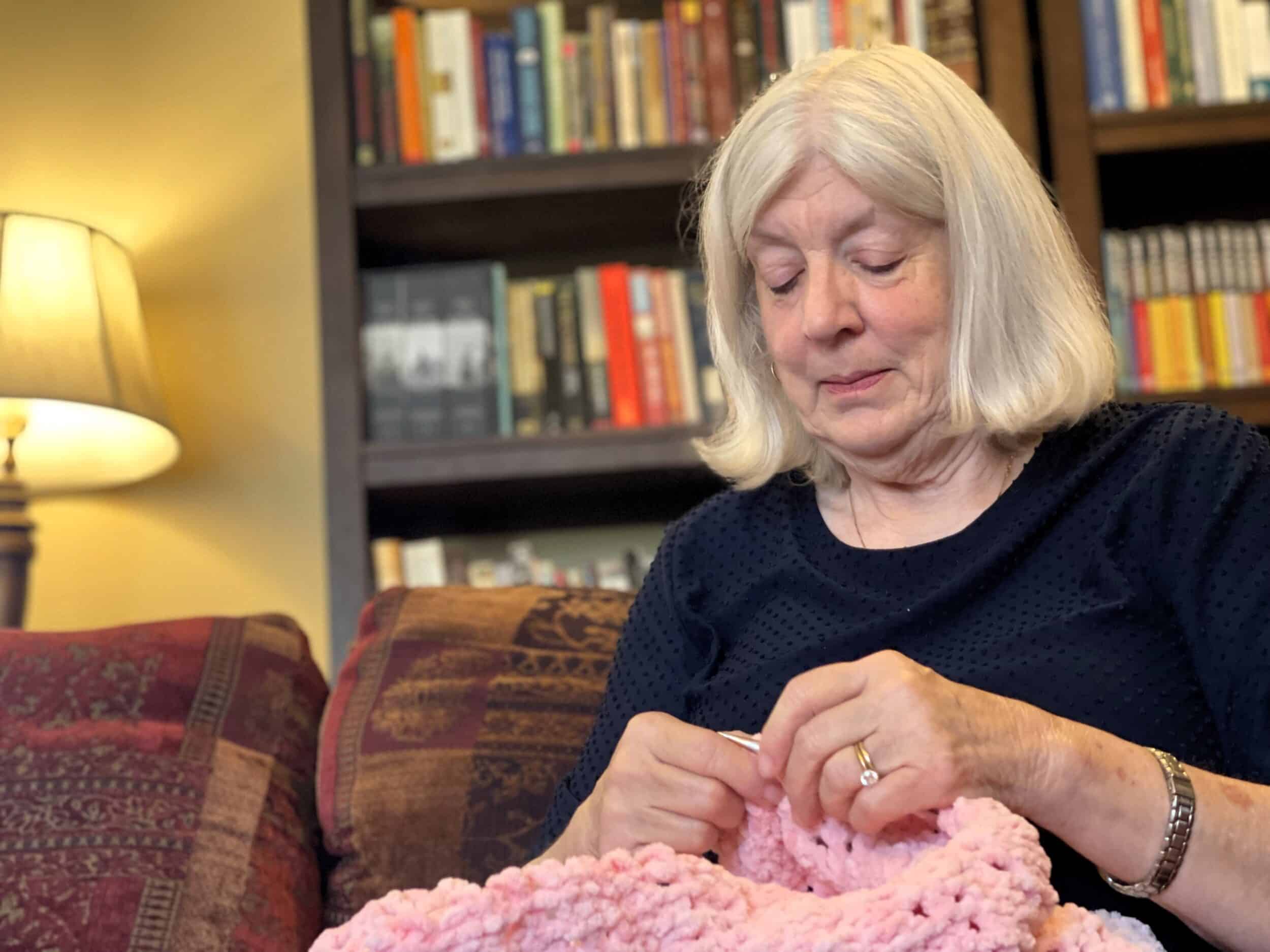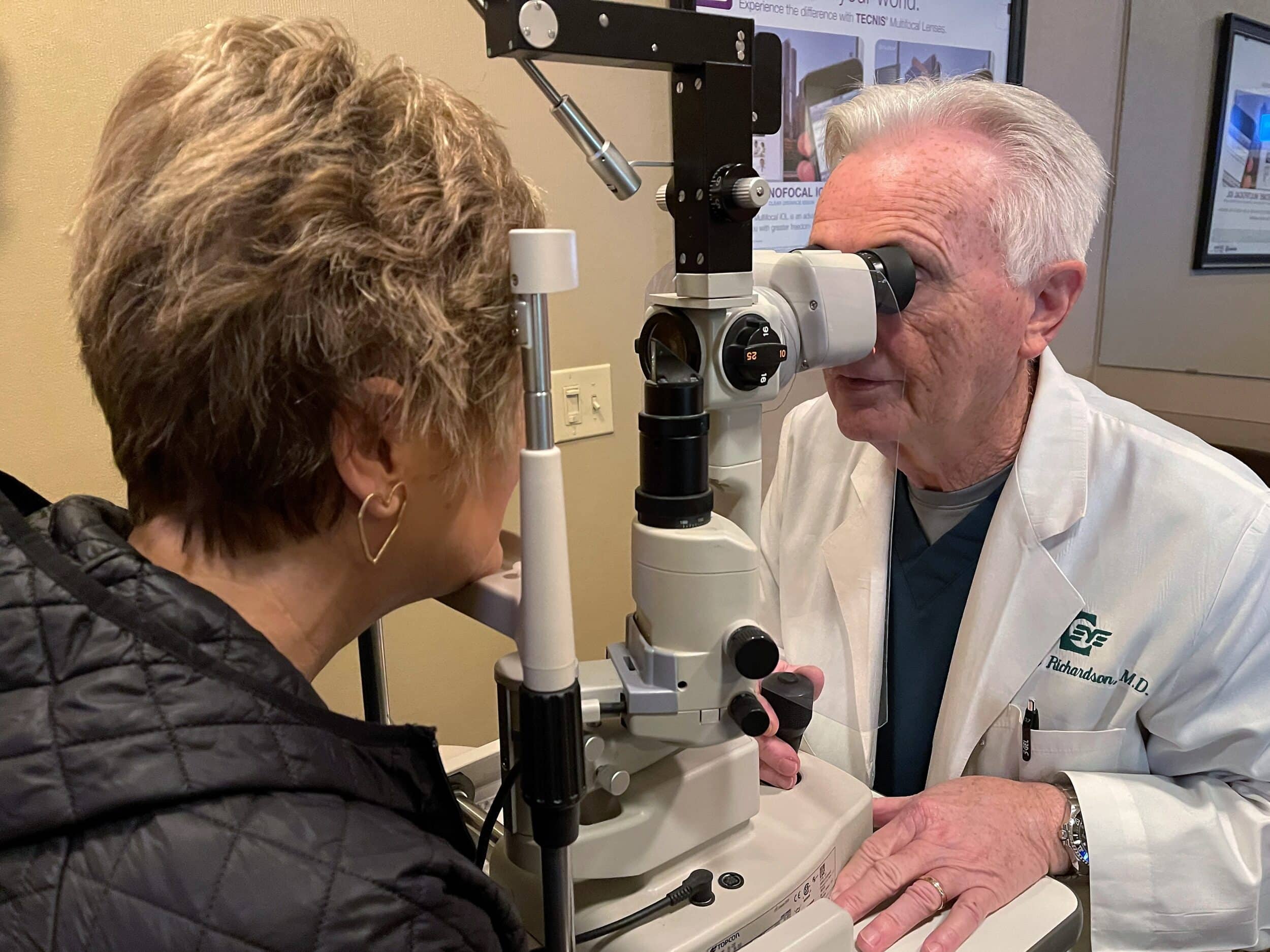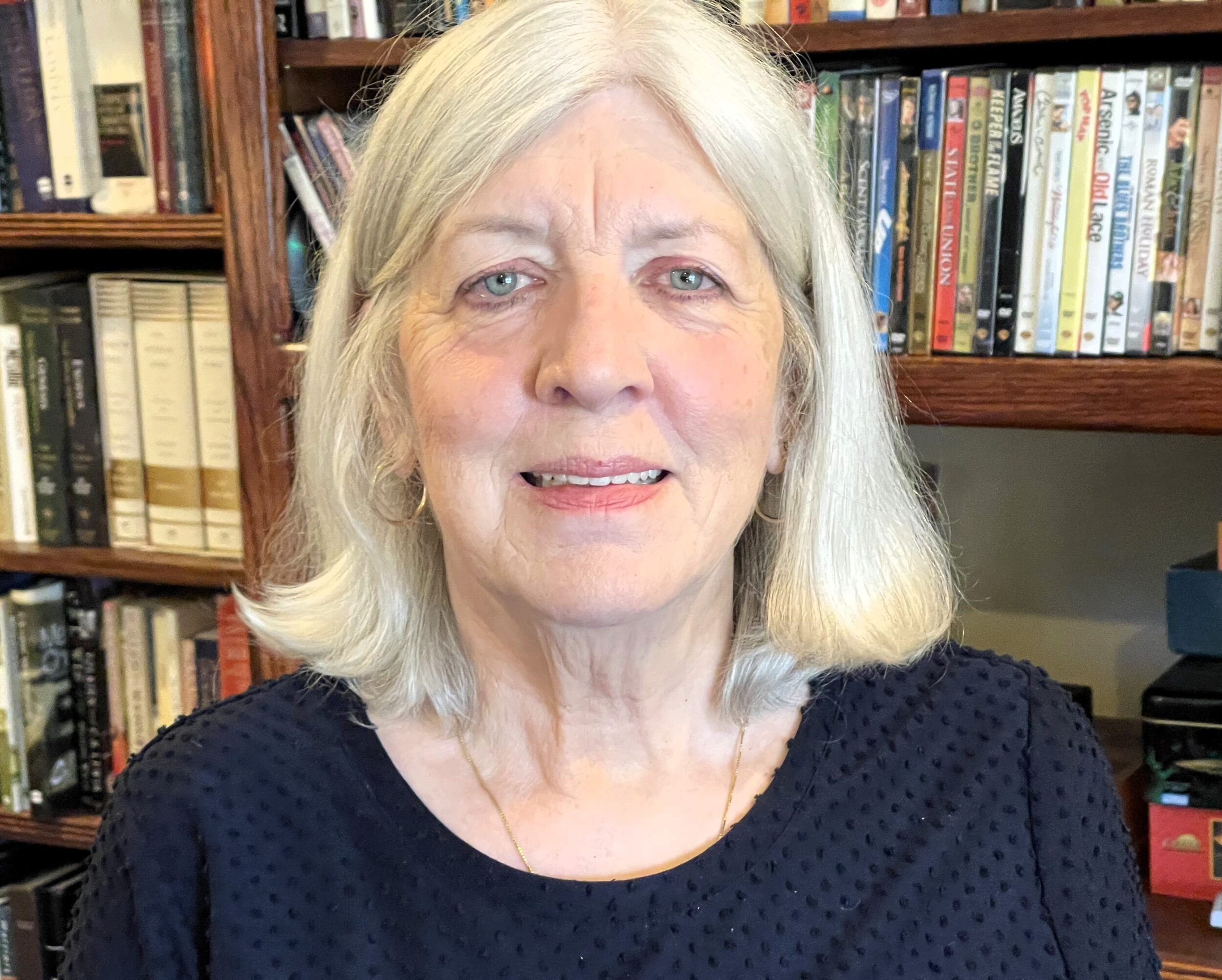
Marcia Cochran and corrective lenses have been “friends” since her fifth-grade teacher noticed her squinting in class. Decades later, she still wore contacts along with “readers” to help her see up close.
But then she began to notice a more dramatic decline in her vision.
“It seemed I was constantly increasing the magnification of my readers,” says Marcia. “I began to think there might be something more going on with my eyesight.”
Her regular eye exams with ophthalmologist David Richardson of Hattiesburg Eye Clinic soon confirmed Marcia’s suspicion: She had cataracts.
Cataracts, the clouding over of the eye’s natural lens, is a leading cause of vision loss for people over 50-in fact, it’s estimated that 90% of people over 65 have some cataract formation, As the condition worsens, a person’s eyesight-and quality of life-begins to diminish.
Fortunately, there is a way to escape this gloomy future through cataract surgery and new lens implants. June is Cataract Awareness Month, a good time to highlight how current treatment can restore lost vision to people with cataracts.

“Cataracts are extremely prevalent,” says Dr. Richardson. “Most people have some development by age 50, which grows progressively worse. Once the condition starts to interfere with daily life, it’s time to get it corrected.”
In the early stages of cataracts, most people don’t notice the subtle changes to their eyesight. Eventually, though, they can experience blurriness, double vision, or color fade. Cataracts are especially troublesome for nighttime drivers as oncoming headlights or street lamps seem overly bright, and may have a “halo” or starburst effect around them.
Some patients like Marcia don’t realize how much their vision has become impaired until after treatment. “Other than having trouble reading up close, I didn’t notice anything out of the ordinary. It wasn’t until after my first surgery that I realized how bad my vision really was.”
“Correcting cataracts is a life-changing event,” says Dr. Richardson. “Many patients come in depressed because of their inability to see clearly. After the procedure, they’re amazed at the change.”
Cataract surgery once required a stay in the hospital. Today, the majority of procedures are performed in an outpatient setting, one eye at a time spaced out over one or two weeks. Patients can choose between two types of surgery: traditional surgery with specialized diamond keratome/scalpel or laser technology.
In Marcia’s case, she opted for laser surgery performed by Dr. Richardson using Hattiesburg Eye Clinic’s Catalys® precision cataract laser system. The clinic was the first provider in Mississippi to offer Catalys®, the first device designed from the ground up as a cataract surgical system.
“Catalys® provides greater precision and a gentler and more comfortable experience for patients than traditional cataract surgery, which itself has a very high success rate,” says Dr. Richardson, “The procedure takes only a few minutes.”
Marcia could attest to that. “It only took about ten minutes, and without any pain.”
Surgery to remove the clouded lens is the first component to a successful outcome. Just as important is the artificial lens, known as an intraocular lens (IOL), implanted in the eye to replace the natural lens. And, it’s no longer “one size fits all”-recent IOL advances have dramatically increased patient choices to match lifestyle or other eye conditions.
“Lens technology is always improving,” says Dr. Richardson. “At present, we’re able to offer lenses that not only conform to a person’s individual way of life, but may in some cases alleviate their need for glasses altogether.”
Marcia chose a TECNIS Eyhance™ lens (a monofocal having one point of focus) that allows her to see more clearly at far distance, something for which she once needed glasses or contacts. She still uses readers for close-up viewing, but at less magnification than she needed before surgery.

“Things are so much clearer and sharper,” says Marcia. “I especially notice the difference when I’m driving.”
But the biggest change for her has been a renewed peace of mind. She hadn’t realized how much her poor vision had increased anxiety in her life.
“I traveled extensively in my career as a field engineer,” says Marcia. “But as my eyesight grew worse, I became more nervous about traveling, especially by myself. That changed after surgery-I recently went on a trip to visit family and felt no fear at all.”
Marcia says undergoing cataract surgery has been one of the best life decisions she’s made. “I walked out of the surgery center able to see 20/20. I told Dr. Richardson that it was too bad I couldn’t have had this twenty years ago. It has truly changed my life for the better!”
To learn more about cataract surgery, be sure to visit our website. To find out how Hattiesburg Eye Clinic can improve your vision health, call 601-268-5910 (or toll-free 800-624-8254) or schedule a consultation with us at www.hattiesburgeyeclinic.com/contact-us/
